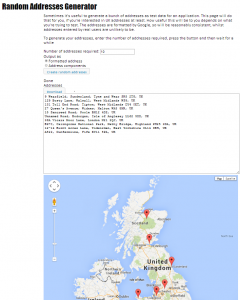
The roadmap for LoadRunner 12 was presented at HP Discover Barcelona in December last year. Since that time, I’ve been lucky enough to have a beta copy of LR12 for evaluation purposes. Now that the product has been released, I’m able to share some of the new features that I’ve found to a wider audience.
Key observations / new features are:
Cloud-based load generators. HP describes this feature as “cloud bursting”. Users now have the ability to provision load generators on AWS (Amazon Web Service) cloud servers from within LoadRunner or Performance Center. As well as this, the ports used to communicate between LoadRunner components such as Load Generators, Controllers, MI Listeners are user configurable through the new “network security manager” tool. This simplifies the setup process and allows more flexibility in distributed test networks or cloud-based test environments. It is even possible to configure different ports/proxies for each Load Generator.
Licensing – 50 vUsers free
We in the user community have been asking for this for a long time. Providing fully-functional applications that allow small-scale testing allow prolonged evaluations and proof-of-concept exercises. This is great, because it allows more people e.g. developers to get hands-on experience and see the potential benefits of using LoadRunner.
This is likely to improve the adoption rate for LoadRunner and prevent the erosion of market share to low-cost / no-cost providers of performance testing software.
All protocols are included in the “community edition” license, with the exception of GUI (UFT) and COM/DCOM protocols as well as those protocols in the “template” bundle (i.e. those vUser types whose scripts are manually created (rather than record/replay) such as C# .Net, VB .Net vUsers).
VUGEN improvements
There are a variety of improvements as you would expect. Key ones are:
- The ability to review replay statistics for tests after each run.
Including details on total connections, disconnections and bytes downloaded.
- The ability to edit common file types in the editor.
- Support for recording in the Internet Explorer 11, Chrome v30 and Firefox v23 browsers.
- The ability to create scripts from Wireshark or Fiddler files.
- The ability to record HTML5 or SPDY protocols.
TruClient improvements
TruClient script converter. This basically replays your TruClient scripts and records the HTTP/HTML traffic allowing you to create these script typers from TruClient recordings. This is similar to recording GUI scripts and then converting to other script types.
The addition of support for Rendezvous points, IP spoofing, VTS2 and Shunra network virtualisation in TruClient scripts.
Linux Load Generator improvements
Building on the increased support for Linux Load Generators in 11.5x, LDAP, DNS, FTP, IMAP, ODBC, POP3, SMTP and Windows Sockets scripts can now be replayed through UNIX load generators.
CI/CD support
Better integration with Jenkins etc.
Platform support
- Support for installation on Windows Server 2012.
(LoadRunner 11.x and PC 11.x only supported up to W2K8 which was a barrier to enterprise adoption).
- LoadRunner components can now run in a “non-admin” user account with UAC and DEP enabled.
There are numerous other improvements which are well documented in the “About LoadRunner” section in LoadRunner help. Now that the community license is available, there’s nothing stopping you from downloading it and giving it a go.
To get your own copy, navigate to www.hp.com/go/loadrunner and follow thre links to download LoadRunner.
– reproduced from my Trust IV blog article at:
http://blog.trustiv.co.uk/2014/03/first-look-loadrunner-12#sthash.pmwREa11.dpuf



